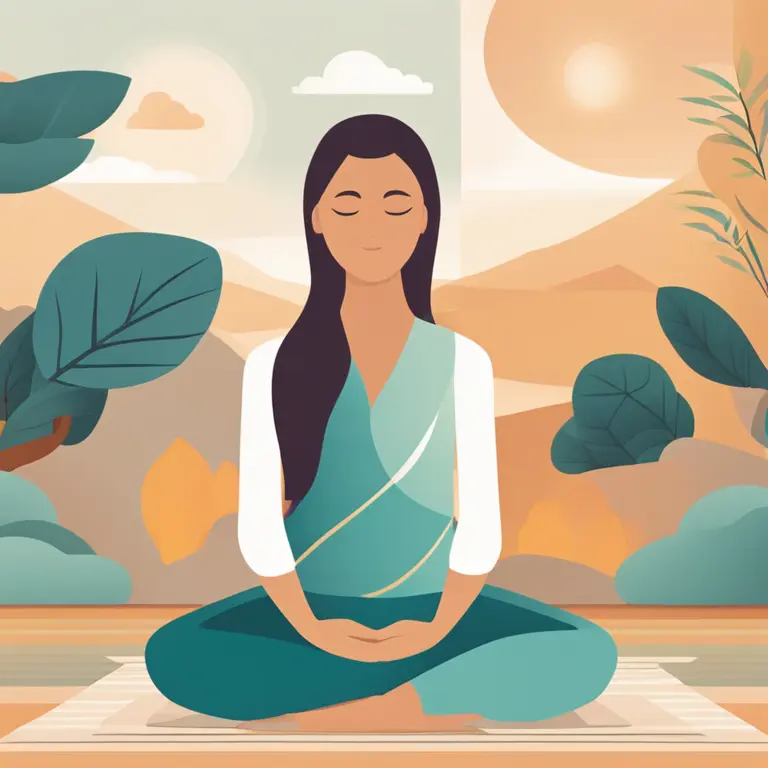
Meditation: A Beginner’s Guide to Mindfulness
Discover meditation techniques perfect for beginners to foster inner peace and clarity in the modern world.
article by Hina Kurosawa
Introduction to Meditation for Newcomers
In an age where the bustle of the digital era can lead to heightened stress, the ancient practice of meditation has emerged as a harbor of tranquility. Meditation for beginners doesn't have to be daunting or complex. This article aims to outline straightforward techniques that any novice can use to embark on a journey of mental clarity and emotional stability. As we dive into the subject, remember that meditation is a personal experience, and practicing patience with oneself is crucial.

Finding Your Comfortable Space
The first step in beginning meditation is to find a quiet and comfortable spot where you won’t be disturbed. This could be a cozy corner in your home or a serene outdoor setting. The important aspect is to have a space that feels safe and peaceful to you. Ensure that your spot supports good posture, whether you choose to sit on a cushion with crossed legs or in a chair with your feet grounded.

Setting a Time Limit
One of the challenges for beginners is to sit for long periods in meditation. Therefore, starting with small, manageable intervals, such as five minutes daily, is advisable. Gradually, as you cultivate the habit and become more accustomed to the practice, you can extend the time. In 2024, amidst the endless notifications and constant call for attention, even a brief pause can prove significantly rejuvenating.

Engaging in Breath Awareness
Breath awareness is a foundational meditation technique ideal for beginners. It entails observing the natural rhythm of your breath—how the air feels entering and leaving your nostrils and the rise and fall of your abdomen. Mindfulness in breathing helps anchor the present moment, steering your attention away from the distractions of daily life or wandering thoughts, a practice more vital now than ever.

Progressing to Guided Meditation
Guided meditation is a beneficial technique for beginners, offering gentle direction through pre-recorded prompts or live guidance. Many free and subscription-based apps and online services are available, featuring a variety of sessions targeting different goals from stress reduction to improved sleep. As meditation has widely been accepted, resources in 2024 are robust, offering high-quality guidance for every level.
Exploring Focused Meditation
Another accessible form of meditation is focused meditation, where you concentrate on something external or internal, like a sound, object, or thought. Whether listening to a repetitive gong, staring at a candle flame, or reciting a mantra, the aim is to bring your focus back to the chosen point of attention whenever the mind wanders, which it inevitably will—particularly when you’re new to meditating.
Cultivating Body Scan Relaxation
Body scan meditation involves paying attention to different parts of the body in sequence, noting sensations without judgment. Starting from the toes and moving upwards, beginners can become keenly aware of tension-release, promoting relaxation. This technique has gained popularity as it assists in the development of bodily awareness and can be a precursor to more advanced practices.
Embracing the Journey
Above all, the practice of meditation for beginners should be embraced as a journey, not a destination. With each session, you’ll learn more about yourself and develop a more profound sense of peace and self-control. Be patient and consistent, and the benefits of meditation will unfold over time, providing a much-needed respite from the frenetic pace of modern living.
Published: 1/18/2024
Modified: 1/18/2024
More predictions
Come back here soon to learn more about yourself and your future


The Science View: Meditation & Brain Health
Delve into the science of how regular meditation practices can influence and improve brain function and overall mental health.


Meditation's Effect on Blood Pressure
Discover how meditation can contribute to lower blood pressure, offering a serene path to cardiovascular health in this in-depth article.


The Meaning of Meditation
A concise foray into the meaning and practice of meditation in contemporary wellness cultures.